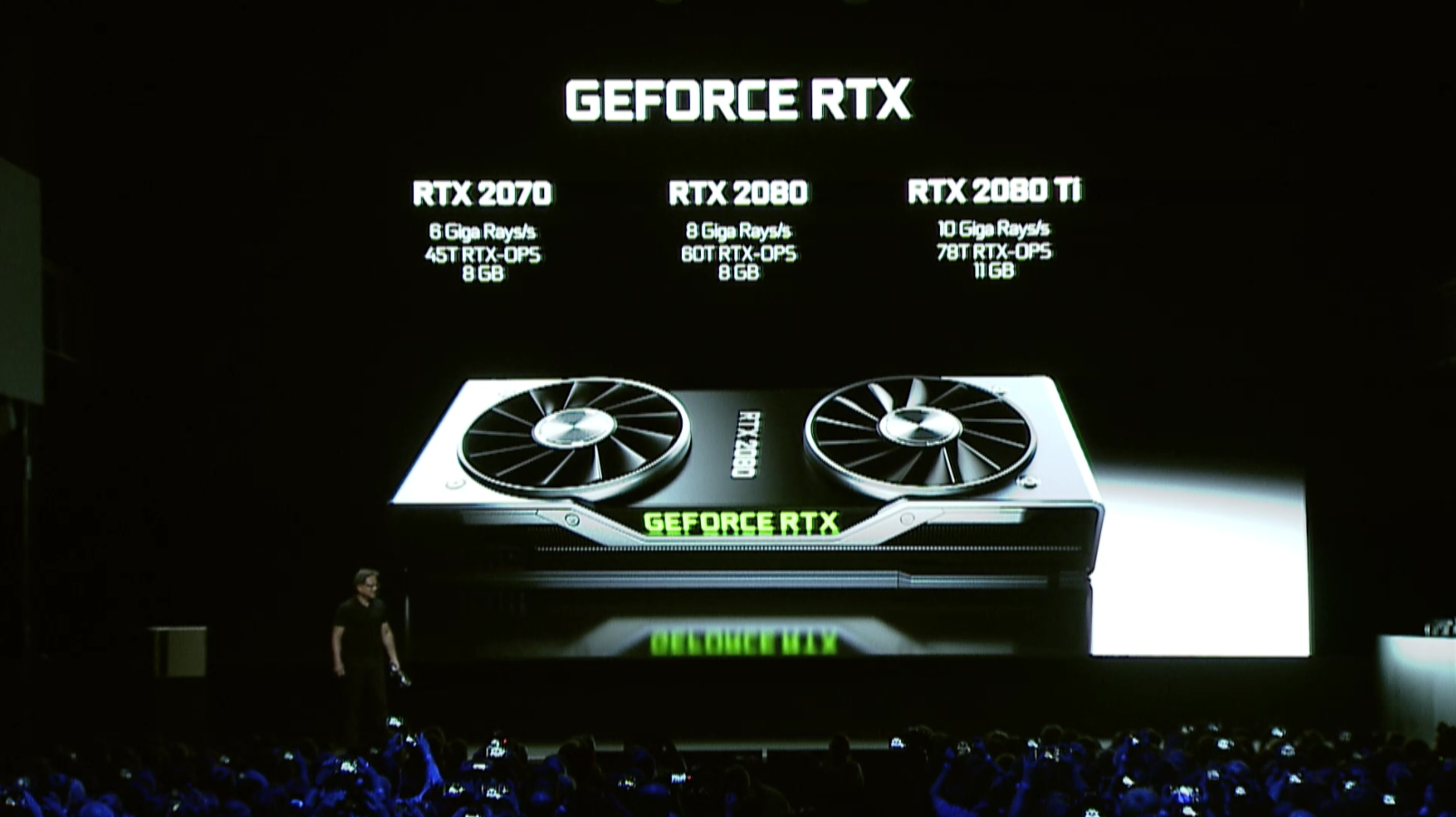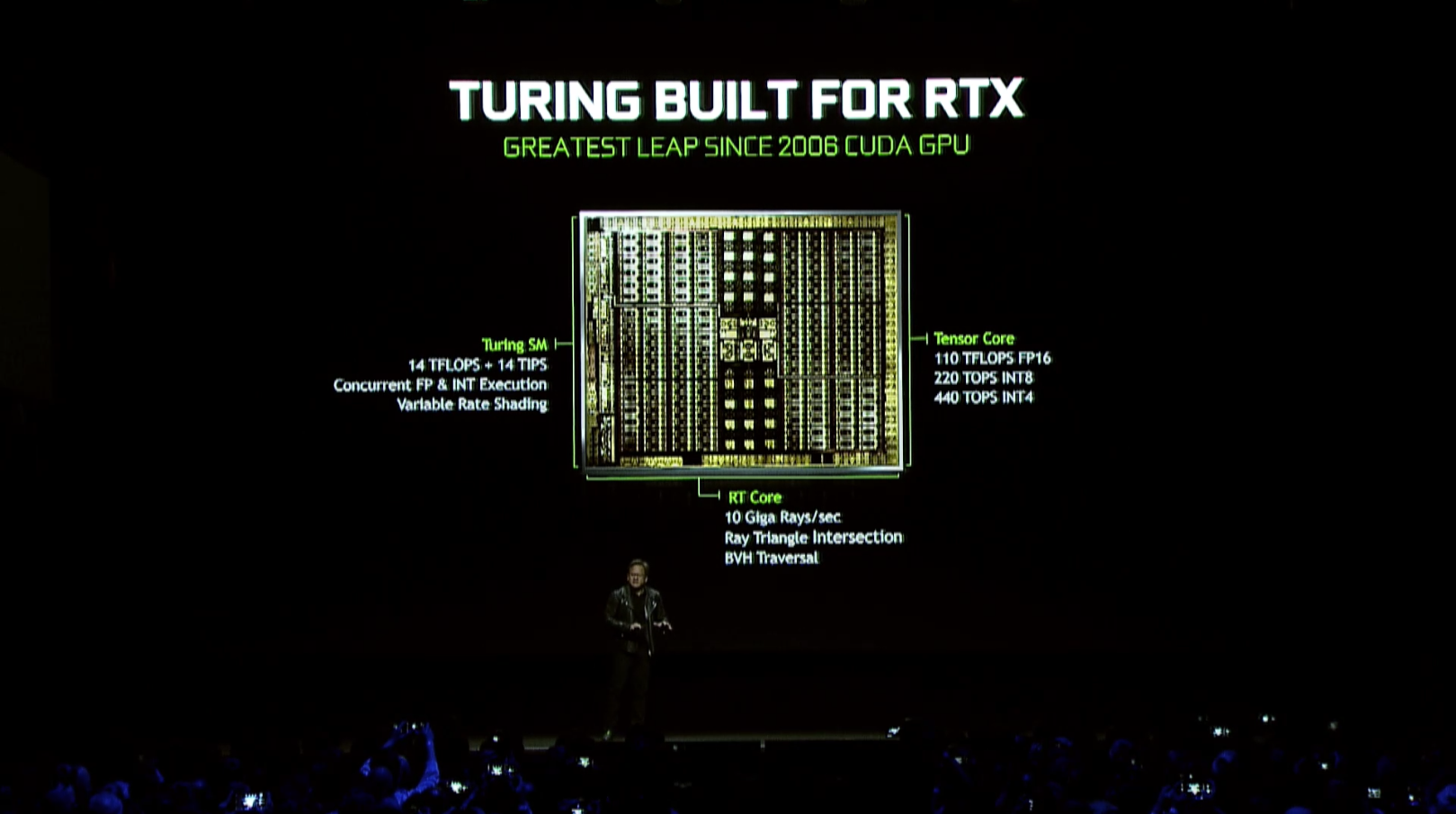Nvidia GeForce RTX 2080 release date, news and features
Nvidia has at long last announced the GeForce RTX 2080 at Gamescom 2018 in Cologne, Germany, and its a monster of a graphics card.
By Nvidia’s own account, the RTX 2080 can be between one-and-half to two times more performant than the Nvidia GTX 1080 it’s meant to replace. And that’s not even touching base on the real-time ray tracing this graphics card can put out.
If this is starting to sound like you’re next graphics card or we even have you slightly excited about this incredible GPU, read on for everything you need to know about the Nvidia GeForce RTX 2080.
Cut to the chase
- What is it? Nvidia’s next-generation flagship graphics card
- When is it out? September 20 2018
- How much will it cost? $699 (£749, AU$1,199)

Nvidia GeForce RTX 2080 release date
Now, with all of the rumors and leaks behind us, we know for certain that two of the three Nvidia RTX 20-series graphics cards, including the RTX 2080, will launch on September 20.
This means that the products should be available in stores and for general online order on that day, and pre-orders processed today on August 20 (at the time of writing) should ship on that same day: September 20. The Nvidia GeForce RTX 2070 is expected to arrive a little later in October 2018.
As for the mobile version, however, it’s more mysterious. We have seen speculation that the mobile RTX 2080 is indeed on the way, but we don’t know when it’s going to make it to market. If we had to guess, we’d pin it somewhere in the first half of 2019.

Nvidia GeForce RTX 2080 price
This is where things might get a little tricky, as Nvidia is currently talking about two prices regarding its new RTX graphics cards at the time of writing. There are the prices that Nvidia CEO Jen-sen Huang announced on-stage and those found on Nvidia's own website. Here's what Huang said on stage:
- Nvidia GeForce RTX 2080 Ti: $999 (about £753, AU$1,388)
- Nvidia GeForce RTX 2080: $699 (about £527, AU$936)
- Nvidia GeForce RTX 2070: $499 (about £376, AU$668)
Now, here's what the prices are listed at on Nvidia's website, which you can pre-order the RTX 2080 and 2080 Ti from right now. Spoiler alert: they're much higher:
- Nvidia GeForce RTX 2080 Ti: $1,199 (AU$1,899, about £904)
- Nvidia GeForce RTX 2080: $799 (AU$1,199, about £602)
- Nvidia GeForce RTX 2070: $599 (AU$899, about £451)
For reference, the Nvidia GeForce GTX 1080 Ti and Nvdia GTX 1080 came with starting prices at $699 (£679, AU$1099) and $599 (£600, AU$925), respectively.
So, regardless of which price being the real deal, these cards are markedly more expensive than previous launches. This is likely why Nvidia's spending a lot of effort on educating the masses on ray tracing and its benefits, as this is a key feature of the graphics cards that's likely costly to produce.

Nvidia GeForce RTX 2080 specs
This is the exciting part of the article. In May, the reported specs of the Nvidia GeForce RTX 2080 were spotted in the TechPowerUp GPU database, and they were looking juicy. However, now we know the real deal, and while they're still impressive, you should level your expectations a bit regarding the core specifications.
The Nvidia GeForce RTX 2080 was widely expected to be more powerful than even the Nvidia Titan Xp, the most powerful consumer graphics card on the market right now. However, that's not necessarily the case on paper – the Titan Xp still has more CUDA cores and more video memory capacity.
Here's how the RTX 2080 shakes out in the most essential specifications, that being clock speed, video memory capacity and video memory speed:

As you can see, Nvidia beefed up its Founders Edition card for early adopters, namely in the processor speed area, which is the one you can pre-order right now (before September 20). You can see that the basic RTX 2080 actually has a slightly lower clock speed than its predecessor, the GTX 1080.
However, this update brings with it vastly improved GDDR6 video memory, which operates at 4 Gbps faster data transfer speeds than the previous model.
Beyond that, Nvidia isn't focused on the speeds of feeds of these graphics cards, necessarily, but rather the technology that its Turing graphics processors enables – particularly, real-time ray tracing and machine learning for advanced rendering.
The RTX 2080 supports the latest in video rendering and output standards, as well daisy-chaining graphics cards via the SLI protocol using the additional Nvidia RTX NVLink Bridge part, which costs $79 (about £59, AU$105). The card can support up to an 8K (7,860 x 4,320) video resolution, and has a 215W thermal design power rating.
Chances are, with this part, you're going to need to upgrade at least one other piece for it to run smoothly, namely if you have a power supply that's doesn't have ample wattage to throw around.
That wraps it up for now regarding the Nvidia RTX 2080 – stay tuned for more information and insights as well as a full review.
Nvidia GeForce RTX 2080 performance
While we haven’t actually got our hands on the new cards in-office to run our own tests, Nvidia has released some official information regarding the RTX 2080’s performance.
Nvidia claims that the RTX 2080 can score close to double the performance of the Nvidia GTX 1080, but only when DLSS (deep learning super-sampling) is enabled. For most other games, you can likely expect a 20-40% increase in performance, enabling 4K gaming at a steady 60 fps.
While Nvidia's released benchmarks are incredibly vague, it does give us a clue what we should expect from the new cards when they launch here in a few weeks.
If rumors are to be true, there’s at least one Nvidia RTX 2080 card that’s been tested in the wild and it seems to even outperform the Nvidia GTX 1080 Ti by 5% and the Nvidia GTX 1080 by 35% in 3DMark Time Spy.
We did get a chance to play around with the RTX 2080 bigger Ti brother at Nvidia’s event, and while we can’t say which games we played, we can say that the RTX 2080 Ti did deliver a smooth 4K 60fps experience across a variety of titles.
As far as real-world performance goes, we’ll know exactly what the Nvidia RTX 2080 is capable of once we get our hands on it. Until then, take this information with a grain of salt.
Joe Osborne has also contributed to this report.
Contributer : Techradar - All the latest technology news https://ift.tt/2L5sVyh

 Reviewed by mimisabreena
on
Thursday, September 06, 2018
Rating:
Reviewed by mimisabreena
on
Thursday, September 06, 2018
Rating:













No comments:
Post a Comment